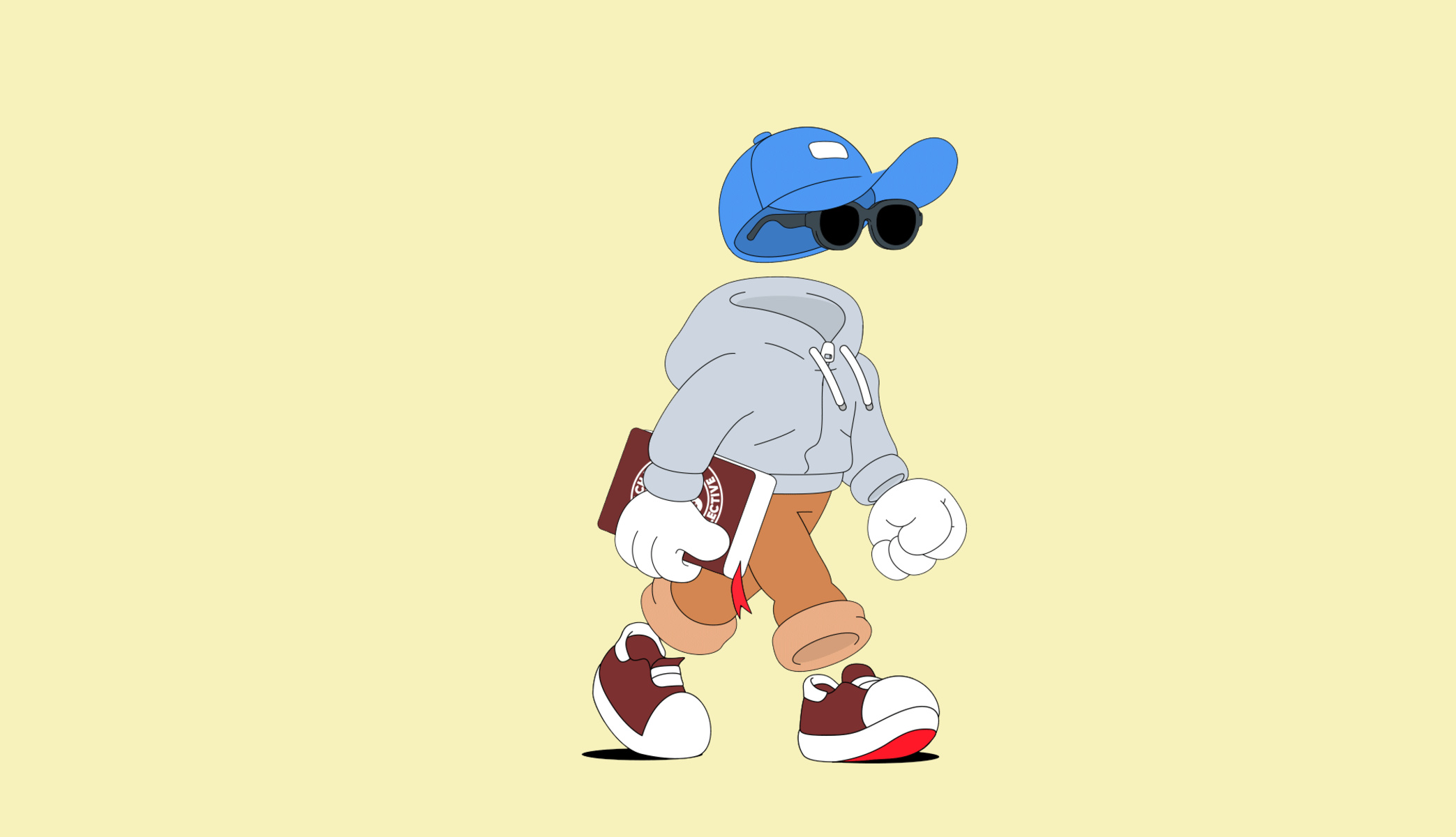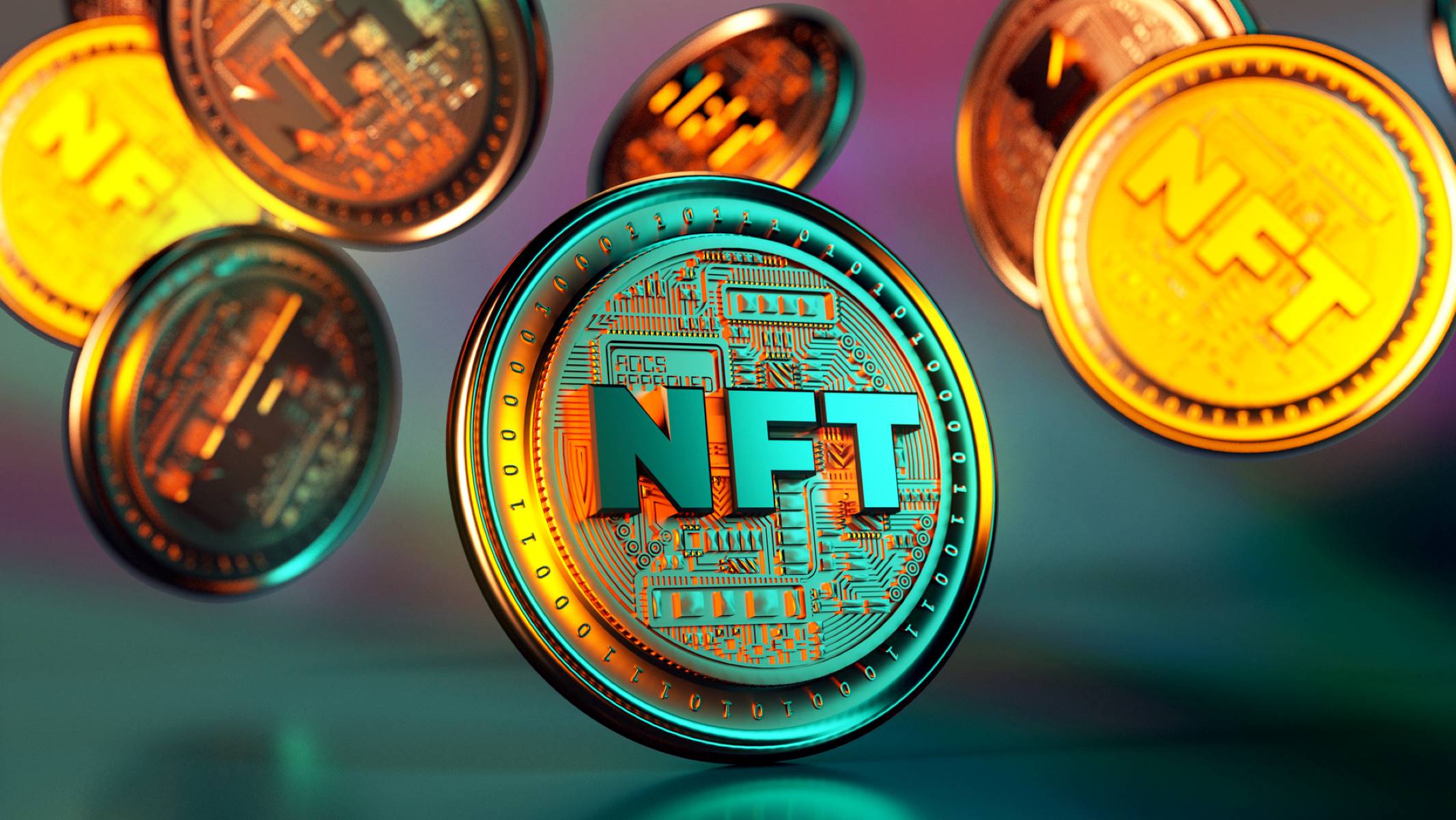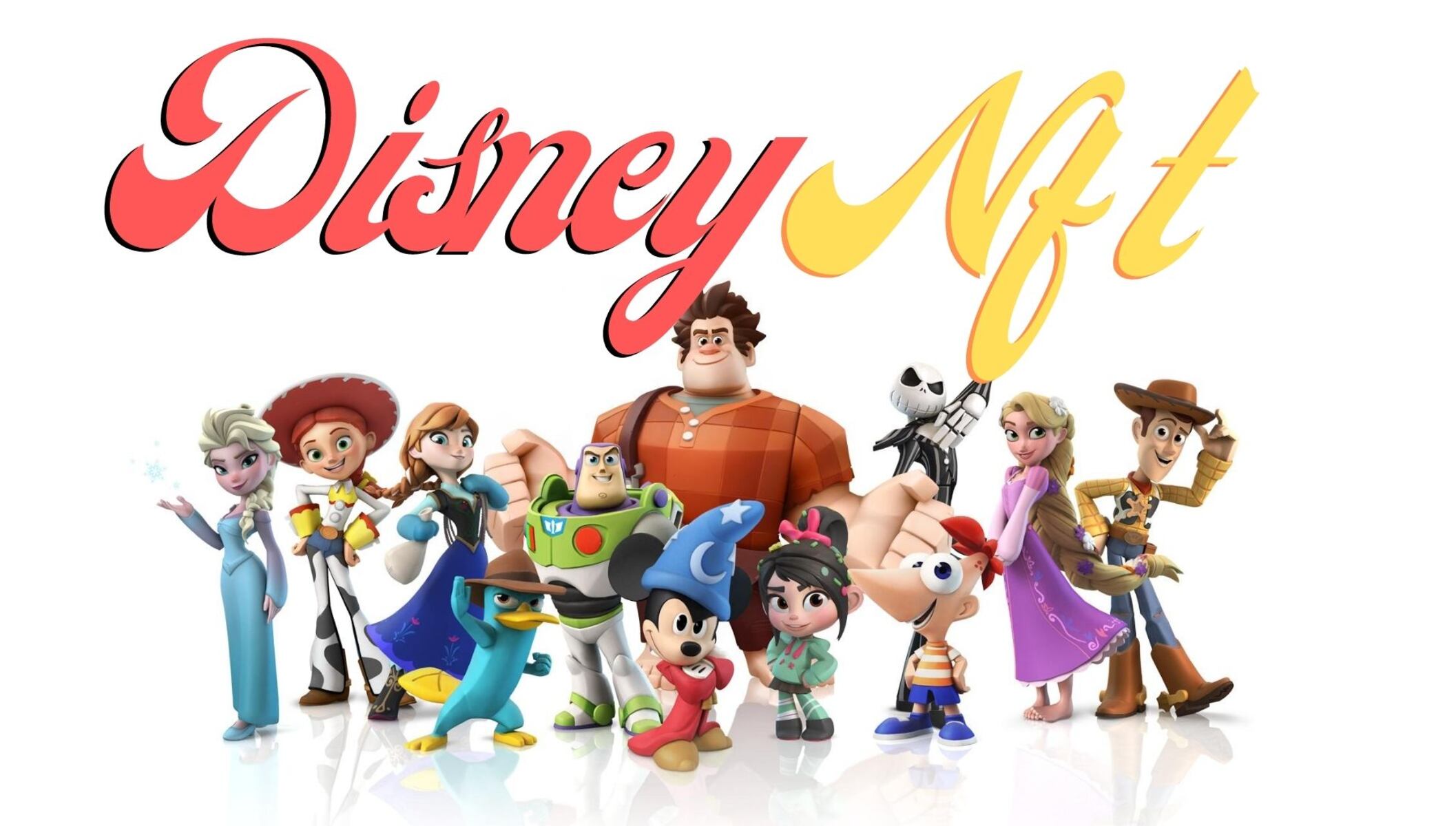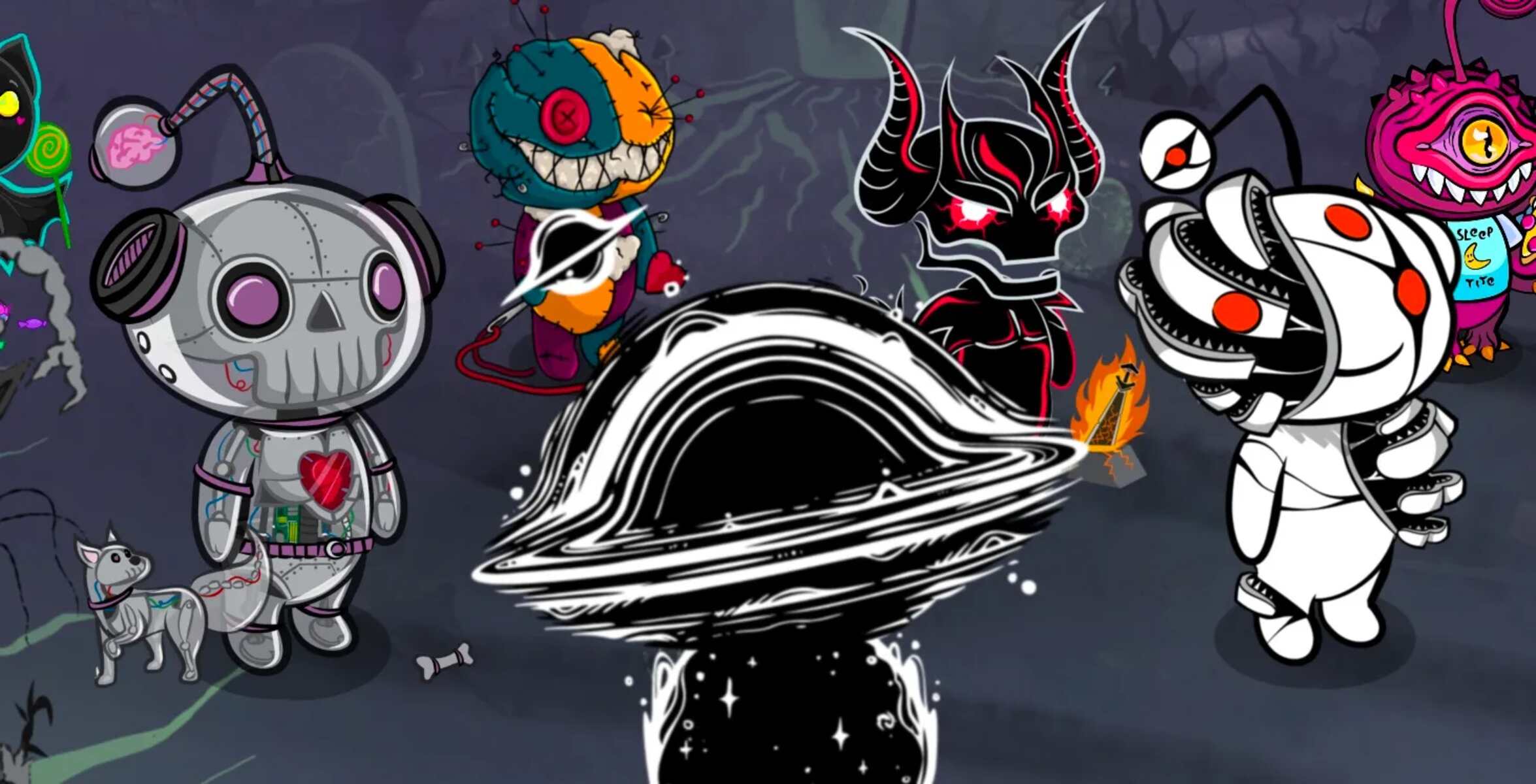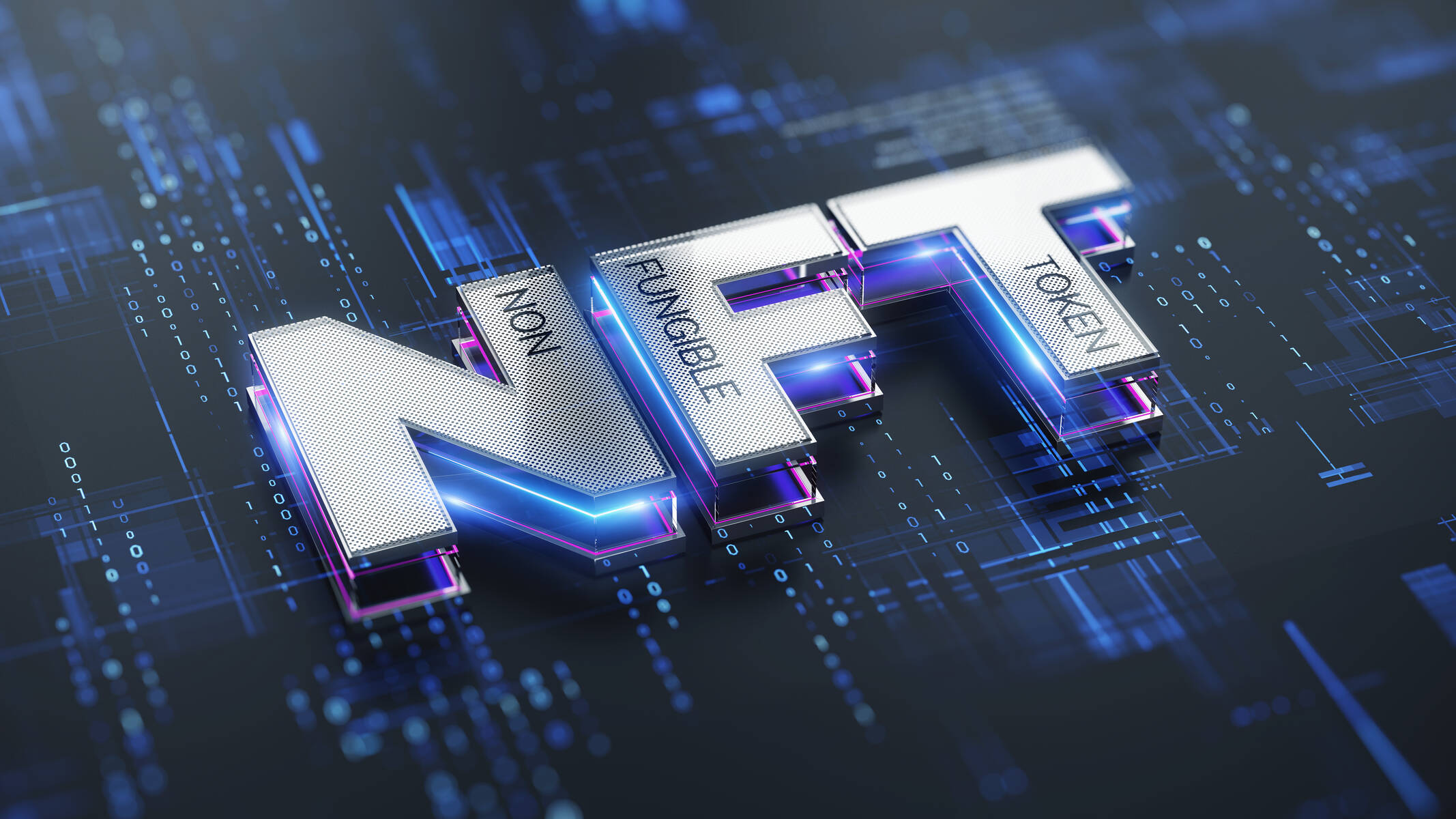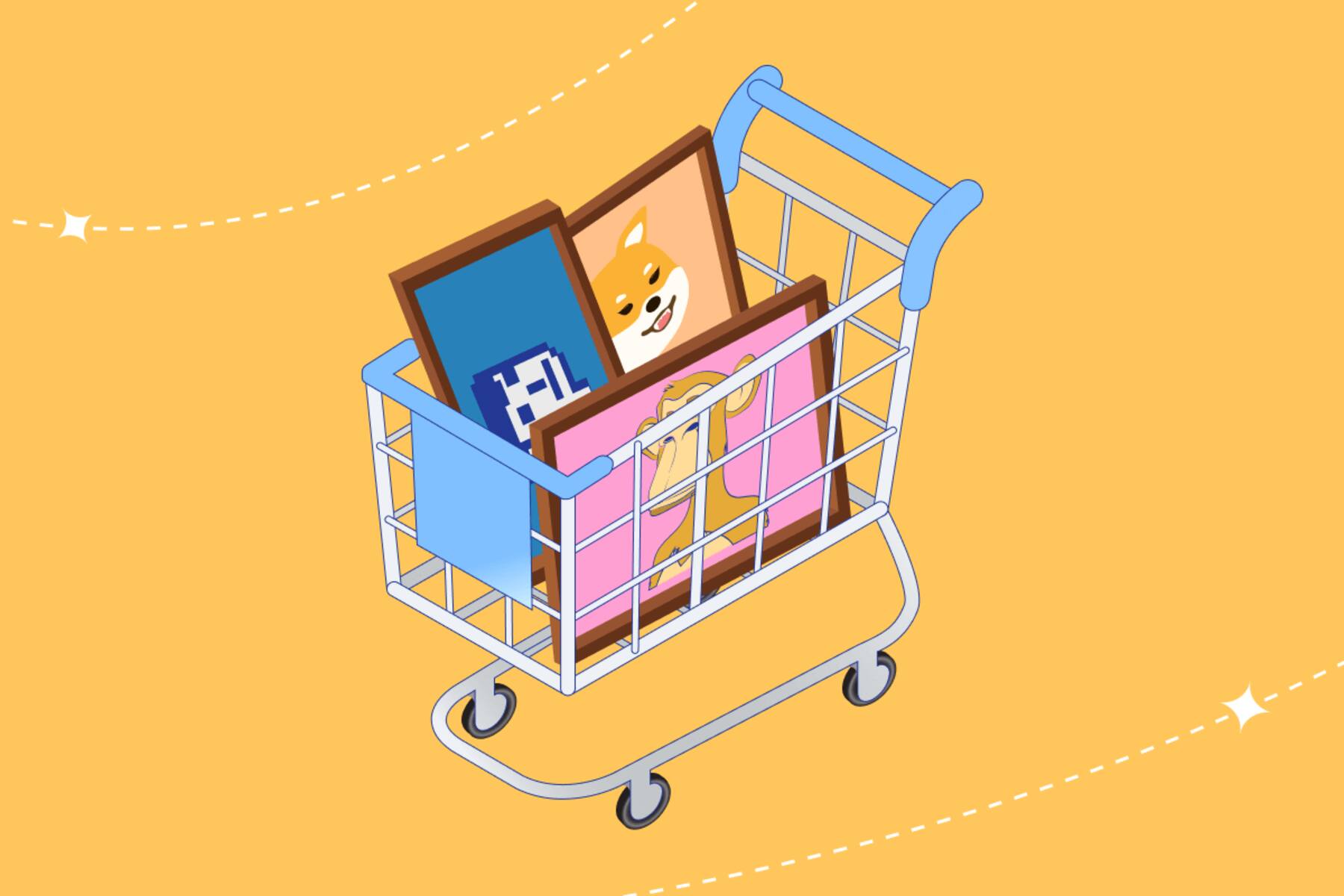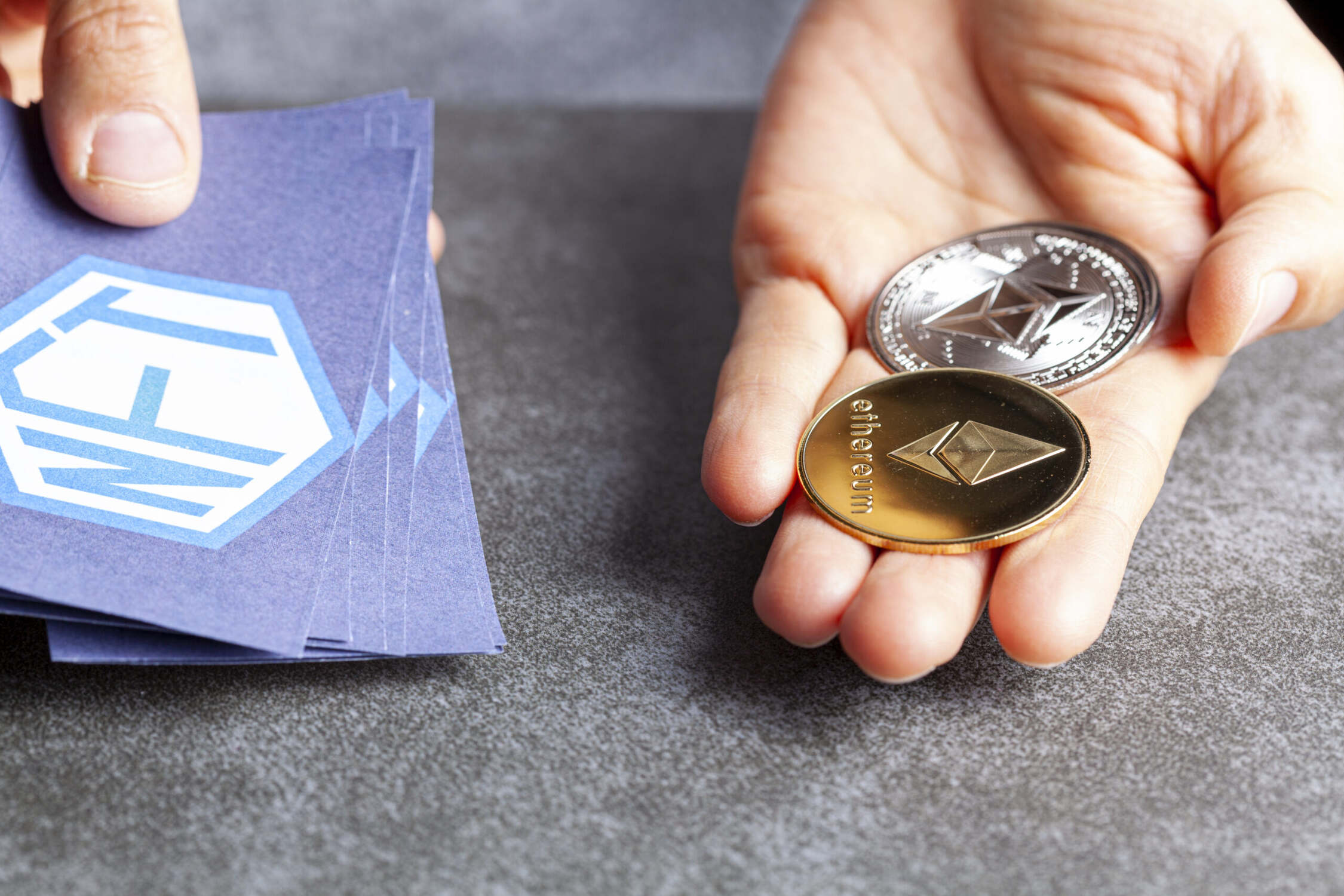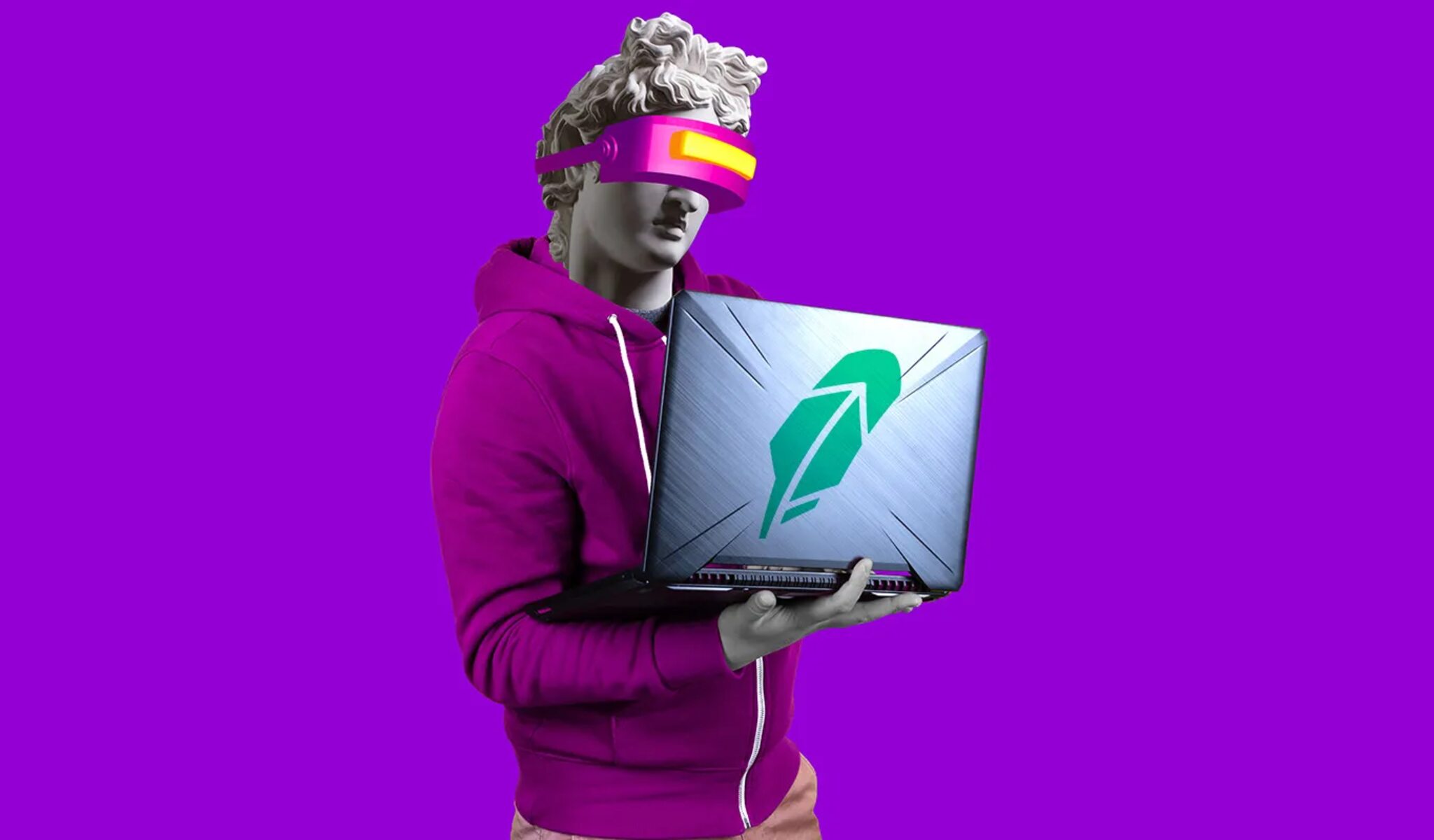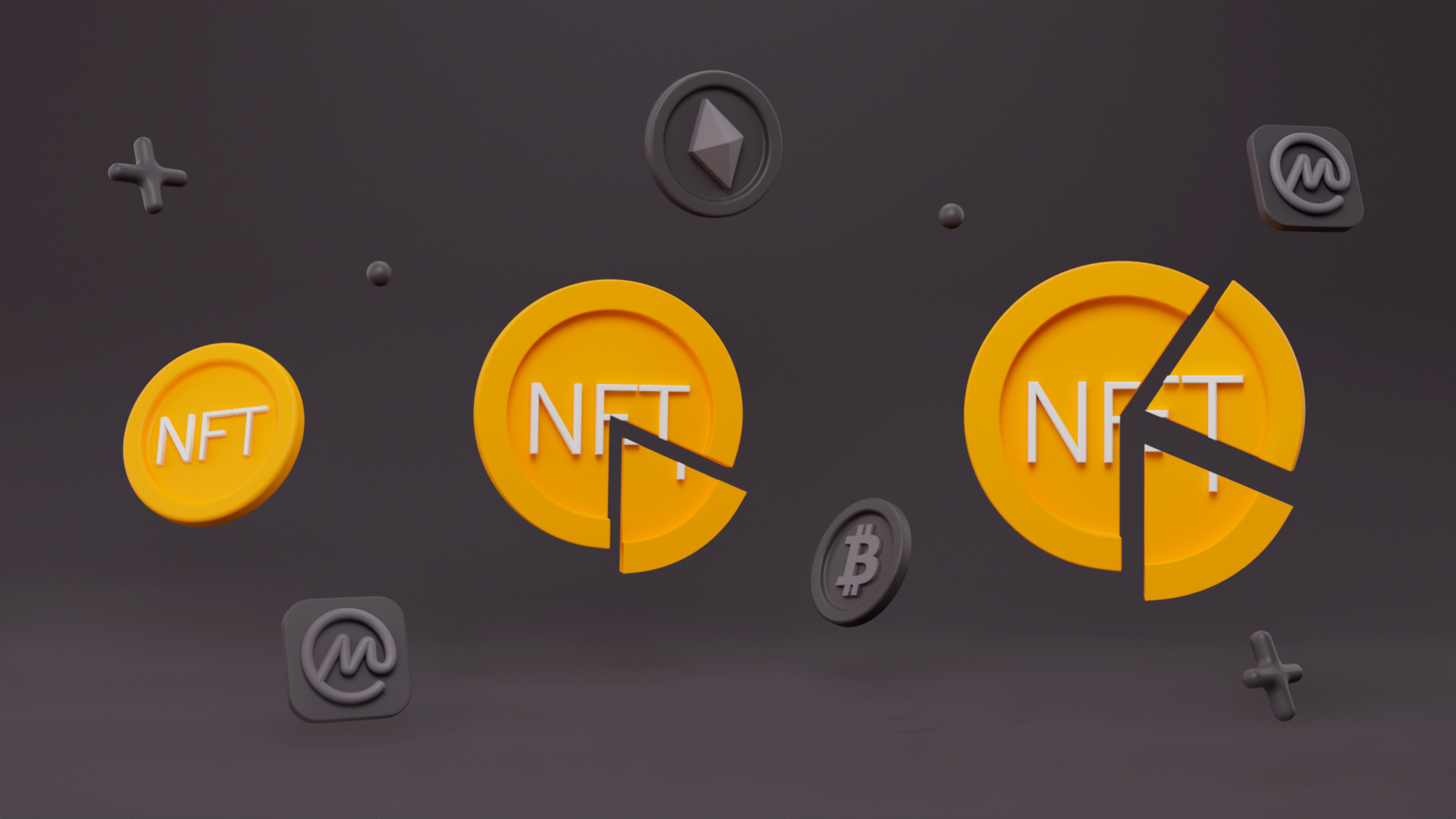Introduction
Welcome to the exciting world of non-fungible tokens, better known as NFTs. In recent years, NFTs have gained significant popularity and generated immense buzz in the digital realm. From art and music to virtual real estate and collectibles, NFTs have revolutionized the way we buy, sell, and own unique digital assets.
Unlike cryptocurrencies such as Bitcoin or Ethereum, which are fungible and can be exchanged on a one-to-one basis, NFTs are indivisible and distinctive. Each NFT represents a one-of-a-kind item or piece of content, verified and recorded on the blockchain, making it tamper-proof and easily traceable.
The concept behind NFTs opens up endless possibilities for creators and collectors alike. Artists can showcase their work and monetize it in ways that were not previously possible. Collectors can own rare and exclusive digital assets, leaving behind the physical limitations and cost of traditional collectibles.
However, before diving into the world of NFTs, it is crucial to have a basic understanding of how they work and what factors to consider before making a purchase. This guide aims to provide you with valuable insights into the NFT market, the top artists and collectors, the risks and rewards of investing in NFTs, and the platforms and marketplaces where you can explore and buy NFTs.
Whether you are an art enthusiast, a music lover, or a tech-savvy investor, the NFT market offers a multitude of options to suit your interests and passions. By exploring different categories such as art, music, collectibles, and more, you can find NFTs that resonate with you and add value to your digital collection.
In the following sections, we will delve deeper into the world of NFTs, guiding you through the process of buying NFTs, managing your collection, and everything you need to know to navigate this exciting new landscape. So fasten your seatbelts and get ready to embark on an exhilarating journey into the world of non-fungible tokens!
What is an NFT?
In order to fully comprehend the concept of a non-fungible token (NFT), it is essential to grasp the meaning of the term “fungible.” In the world of finance, fungibility refers to the interchangeability of assets or commodities. For example, one dollar bill is interchangeable with another dollar bill, as they have the same value and can be used in the same way. Cryptocurrencies like Bitcoin and Ethereum are also fungible, meaning one unit is equivalent to another.
On the other hand, non-fungible tokens (NFTs) are unique and indivisible digital assets that exist on a blockchain. Each NFT represents something distinct and cannot be exchanged on a one-to-one basis. Think of NFTs as the digital equivalents of real-world collectibles such as trading cards, rare stamps, or works of art.
NFTs derive their uniqueness and scarcity from the blockchain technology that underpins them. Essentially, a blockchain is a decentralized ledger that records and verifies transactions. This technology ensures the authenticity and provenance of NFTs, making them secure and difficult to replicate or counterfeit.
Furthermore, NFTs utilize smart contracts, which are self-executing agreements embedded within the blockchain. Smart contracts enable NFTs to carry additional properties such as royalties, provenance history, and programmable features. These properties enhance the value and functionality of NFTs by providing artists and creators with more control over their work and allowing for ongoing monetization.
One of the primary use cases for NFTs is in the field of digital art. Artists can create unique digital artworks and tokenize them as NFTs, enabling them to be bought, sold, and owned by collectors. With NFTs, artists can retain an ongoing revenue stream through royalties on future sales of their works.
NFTs have also extended beyond the realm of art, finding applications in music, virtual real estate, virtual goods, and even social media content. Musicians can release limited-edition albums or songs as NFTs, offering their fans exclusive access and additional perks. Virtual real estate allows individuals to purchase and own digital land or spaces within virtual worlds.
It’s important to note that the value of an NFT lies in its perceived worth by the market. Collectors assign value based on factors such as the artist’s reputation, the rarity of the asset, and its demand within the community. Like any investment, the value of an NFT can fluctuate over time.
In the next sections, we will explore the intricacies of the NFT market, the factors to consider before purchasing an NFT, and the top artists and creators shaping the NFT landscape. So buckle up and get ready to embark on an exciting journey into the world of non-fungible tokens!
Understanding the NFT Market
The NFT market has witnessed a tremendous surge in popularity and growth in recent years. To better navigate this fascinating landscape, it is vital to have a comprehensive understanding of how the NFT market functions and what factors contribute to its dynamics.
First and foremost, the NFT market operates on various platforms and marketplaces where buyers and sellers can interact. Some of the most popular NFT platforms include Ethereum-based marketplaces like OpenSea, Rarible, and SuperRare. These platforms provide a user-friendly interface for browsing, buying, and selling NFTs.
Another essential aspect of the NFT market is the concept of secondary sales. After an initial sale, NFTs can be resold on the marketplaces, usually at a higher or lower price depending on factors such as demand, scarcity, and the reputation of the artist or creator. Secondary sales often include royalties for the original artist or creator, ensuring ongoing revenue streams.
The value of an NFT is subjective and depends on several factors. The reputation and influence of the artist or creator greatly impact the desirability and perceived worth of an NFT. Established artists with a strong following in the traditional art world are more likely to attract higher bids and prices.
Rarity is another significant factor determining the value of an NFT. Scarce NFTs, whether they are limited editions or one-of-a-kind creations, tend to have higher demand and command higher prices. Collectors are often drawn to owning unique assets that are difficult or impossible to replicate or acquire.
The type of NFT also plays a role in its market value. While digital art constitutes a significant portion of the NFT market, other categories such as music, virtual real estate, and collectibles are gaining traction. As the NFT market continues to evolve, we can expect to see innovative and diverse NFT offerings across various industries.
It is worth noting that the NFT market is not without its controversies and criticisms. Some critics argue that the current hype and speculation surrounding NFTs could be a bubble waiting to burst. Additionally, concerns over the environmental impact of blockchain technology and the carbon footprint of NFT transactions have come to the forefront of discussions about sustainability.
As with any investment or emerging market, it is important to do thorough research, exercise caution, and allocate funds wisely when participating in the NFT market. Educating oneself about the nuances of the market and staying informed about new developments can help make informed buying and selling decisions.
In the upcoming sections, we will explore the factors to consider before buying an NFT, highlight some of the top artists and creators in the NFT space, and delve into the process of purchasing and managing your NFT collection. So, buckle up and get ready to embark on a journey into the exciting world of non-fungible tokens!
Factors to Consider Before Buying an NFT
Before you jump into the world of NFTs and make a purchase, it’s essential to consider a few key factors to ensure you make informed decisions and maximize your experience. Here are some important factors to keep in mind:
1. Research the Artist or Creator: Before buying an NFT, it’s crucial to research the artist or creator behind the artwork. Look into their reputation, body of work, and any previous sales or collaborations. This will help you gauge the authenticity and quality of the NFT and make an informed decision.
2. Token Authenticity: Verify the authenticity of the NFT and ensure that it is not a counterfeit or replica. Examine the details provided by the artist or creator, including the smart contract address, metadata, and verification methods offered by the platform or marketplace.
3. Scarcity and Rarity: Consider the scarcity and rarity of the NFT. Collectors often value limited editions or one-of-a-kind pieces, which tend to have higher demand and potential for appreciation in value over time. However, do not solely rely on scarcity as the determining factor, but also consider the overall quality and significance of the artwork.
4. Market Demand and Trends: Stay informed about the current market demand and trends in the NFT space. Understanding what types of NFTs are popular and what collectors are seeking can help you make more strategic purchases. Keep an eye on emerging artists, new collaborations, and evolving categories to stay ahead of the curve.
5. Investment Potential: While NFTs can be bought for personal enjoyment, many collectors also see them as investments. Consider the potential for the NFT to appreciate in value over time. Look at historical sales data, previous price trends, and the reputation of the artist or creator to assess the investment potential of the NFT.
6. Platform and Marketplace: Choose a reputable platform or marketplace to buy your NFT. Research the platform’s security measures, user reviews, and transaction fees. Select a platform that provides a smooth and reliable user experience and has a strong track record in the NFT market.
7. Wallet and Storage: Ensure that you have a secure digital wallet to store your NFTs. Consider factors such as ease of use, security features, and compatibility with the platform or marketplace where you plan to buy or sell your NFTs. Remember to keep backup copies of your wallet information to prevent any loss or theft of your digital assets.
8. Personal Preference: Lastly, trust your own judgment and personal preferences. Buy NFTs that resonate with you and align with your interests and artistic taste. Collect for the joy and pleasure of ownership rather than solely for potential financial gains.
By considering these factors before buying an NFT, you can make well-informed decisions and navigate the exciting world of non-fungible tokens with confidence. As the NFT market continues to evolve, staying informed and adapting your strategies will ensure a rewarding experience as a collector or investor.
Top NFT Artists and Creators
The world of NFTs has given rise to a new generation of digital artists and creators, pushing the boundaries of creativity and innovation. These talented individuals have made a significant impact on the NFT market, earning recognition, acclaim, and substantial sales. Here are some of the top NFT artists and creators shaping the landscape:
Beeple (Mike Winkelmann): Known for his groundbreaking digital artworks, Beeple gained international attention with his $69 million sale of “Everydays: The First 5000 Days” at a Christie’s auction in 2021. His thought-provoking and visually stunning pieces have captivated collectors and art enthusiasts worldwide.
Pak: An anonymous digital artist, Pak, has gained a cult following within the NFT community. Their abstract and surreal works have received high levels of demand and have sold for significant amounts. The mysterious identity of Pak adds an air of intrigue and fascination to their creations.
Mad Dog Jones: With his unique cyberpunk-inspired art, Mad Dog Jones (Matt JOnes) has captured the attention of collectors and enthusiasts. His vibrant and futuristic digital landscapes often evoke a sense of nostalgia and explore themes of technology, identity, and the human condition.
XCOPY: XCOPY, the pseudonymous artist, creates mesmerizing and dystopian digital art. With a distinct style that blends various elements of science fiction, technology, and societal themes, XCOPY’s works have gained widespread attention and have become highly sought-after in the NFT market.
Fewocious (Victor Langlois): Fewocious, a young and talented artist, has made waves in the NFT space with his dynamic and colorful pieces. His art often explores themes of identity, self-expression, and the beauty of diversity. With a rapidly growing fan base, Fewocious has quickly established himself as one of the top emerging artists in the NFT world.
Grimes (Claire Boucher): Known not only for her music but also her artistic endeavors, Grimes ventured into the NFT market with her digital artworks. Her pieces often incorporate elements of sci-fi, mythology, and surrealism, captivating audiences and collectors alike.
John Gerrard: Recognized for his groundbreaking virtual installations, John Gerrard is a renowned artist exploring the intersection of art and technology. His NFT artwork pushes conceptual boundaries and incorporates elements of environmentalism, history, and human impact.
Trevor Jones: Trevor Jones is widely recognized for his stunning digital paintings and NFT artworks. Often blending traditional and digital mediums, his vibrant and imaginative pieces have earned him a devoted following and significant sales.
WhIsBe: WhIsBe, the street artist and creator of “The Vandal,” is known for his iconic and thought-provoking works. The combination of street art aesthetics and NFT technology has generated tremendous interest in WhIsBe’s offerings.
Murat Pak: Holding a prominent position in the NFT art scene, Murat Pak, the founder of “Art Blocks,” has made a considerable impact. Art Blocks is a platform that offers generative art, allowing artists to create unique algorithmically generated art pieces for collectors to enjoy.
These are just a few examples of the incredible artists and creators making their mark in the NFT world. The NFT market continues to evolve rapidly, and new talented individuals are emerging every day. Exploring the works of these artists and keeping an eye on rising talent will allow you to discover unique and captivating NFTs that resonate with your artistic sensibilities.
Emerging NFT Collectibles
In addition to digital art and music, the world of NFTs is witnessing the rise of emerging collectibles that have captured the attention of collectors and enthusiasts. These NFT collectibles encompass a wide range of categories, from virtual pets and trading cards to virtual real estate and virtual fashion. Here are some of the emerging NFT collectibles that are gaining popularity:
CryptoPunks: CryptoPunks are among the earliest and most iconic NFT collectibles. They are unique, algorithmically generated pixel art characters that are owned and traded on the Ethereum blockchain. Each CryptoPunk has distinct attributes such as hats, hairstyles, and accessories, making them highly sought-after by collectors.
Hashmasks: Hashmasks are a collection of unique digital portraits created by a collective of anonymous artists. Each Hashmask has its own name and attributes, making it a one-of-a-kind collectible. Hashmasks gained popularity for their visually striking and imaginative designs.
Axie Infinity: Axie Infinity is a virtual pet game built on the Ethereum blockchain. Players can collect, breed, and battle digital creatures called Axies. Axies possess various attributes and can be traded and sold as NFTs. The game’s play-to-earn model and vibrant community have contributed to its growing popularity.
NBA Top Shot: NBA Top Shot is an officially licensed NFT collectible platform that allows users to buy, sell, and trade unique NBA-licensed moments. These moments are highlight clips of NBA players’ performances, and each moment is minted as an NFT. NBA Top Shot has gained traction among sports enthusiasts and basketball fans worldwide.
Decentraland: Decentraland is a virtual reality platform built on the Ethereum blockchain. Users can own and trade virtual land, known as LAND, within this decentralized virtual world. Decentraland allows users to create and monetize virtual experiences, including artwork, games, and social interactions.
Rumble Kong League: Rumble Kong League is an emerging NFT collectible project that combines digital collectibles and a fantasy sports league. Users can collect and trade unique Kong characters and build virtual teams to compete in fantasy football-like tournaments. The project aims to blur the lines between gaming, collectibles, and sports.
Art Blocks Curated: Art Blocks Curated is a platform that offers generative art NFTs created by various artists. The artworks are algorithmically generated using smart contracts, resulting in unique and visually captivating pieces. Art Blocks Curated has gained popularity for its innovative approach to NFT art.
The emergence of these NFT collectibles is a testament to the limitless possibilities offered by blockchain technology and the creativity of artists and developers in the NFT space. As the market continues to evolve, we can expect to see even more exciting and diverse collectibles emerge, blurring the lines between digital and physical ownership.
Whether you’re interested in owning digital pets, virtual real estate, or unique artwork, exploring the world of emerging NFT collectibles offers an opportunity to engage with unique and interactive digital assets that hold both personal and financial value.
Investing in NFTs: Risks and Rewards
Investing in non-fungible tokens (NFTs) can be an exciting and potentially lucrative endeavor, but it’s important to be aware of the associated risks and rewards. Here are some key points to consider when venturing into the world of NFT investments:
Rewards:
1. Potential for High Returns: One of the primary attractions of investing in NFTs is the potential for significant returns. Some NFTs have sold for stunning amounts, turning modest investments into substantial profits. The rapidly evolving nature of the NFT market opens up opportunities for early adopters and those with a keen eye for potentially valuable digital assets.
2. Access to Unique Digital Assets: Investing in NFTs allows you to own one-of-a-kind digital assets, such as rare artworks, collectibles, or virtual real estate. Owning unique NFTs can bring personal satisfaction and the pride of ownership among like-minded collectors.
3. Supporting Creators: NFTs offer a direct connection to artists and creators, providing a way to support their work while potentially benefiting from their success. Purchasing an NFT can provide financial support to artists, who often receive royalties on secondary sales, incentivizing their continued creative endeavors.
Risks:
1. High Volatility: The value of NFTs can be highly volatile, with prices fluctuating drastically in short periods. Market demand, current trends, and the reputation of the artist or creator can all impact the value of an NFT. Investors should be prepared for potential rapid price swings and the possibility of the market experiencing corrections or downturns.
2. Unpredictable Market Sentiment: The NFT market is influenced by various factors, including the broader cryptocurrency market, media coverage, and investor sentiment. Shifts in market sentiment can cause sudden changes in demand and value, making it important to stay informed and adaptable to market dynamics.
3. Limited Regulation: The NFT market is relatively new, and regulatory frameworks are still evolving. This lack of regulation introduces certain risks, including potential fraud, counterfeit NFTs, and disputes over ownership or provenance. Investors should exercise caution, do thorough research, and transact on reputable platforms to mitigate these risks.
4. Emerging Technology: The underlying blockchain technology and infrastructure supporting NFTs are still in a nascent stage. Issues such as scalability, energy consumption, and interoperability may impact the long-term viability and adoption of NFTs. Investors should be conscious of these technological risks and monitor advancements in the field.
5. Subjectivity of Value: The value of an NFT is largely subjective and driven by market demand. While factors such as the reputation of the artist, scarcity, and uniqueness play a role in determining value, there is no guarantee that an NFT will appreciate in the future. Investors should evaluate the investment potential based on their own research and analysis.
When investing in NFTs, it is essential to approach with caution, conduct proper due diligence, and understand the risks involved. Diversification, setting realistic expectations, and having a long-term investment perspective can help mitigate potential risks and increase the likelihood of reaping rewards in this exciting and evolving market.
NFT Platforms and Marketplaces
The growing popularity of non-fungible tokens (NFTs) has led to the emergence of various platforms and marketplaces that cater to the buying, selling, and trading of these unique digital assets. These platforms provide a vital infrastructure for creators, collectors, and investors to engage with NFTs. Here are some of the prominent NFT platforms and marketplaces:
1. OpenSea: OpenSea is one of the largest and most well-known NFT marketplaces. It operates on the Ethereum blockchain and offers a wide range of NFTs, including digital art, collectibles, virtual real estate, and more. OpenSea provides a user-friendly interface for browsing, buying, and selling NFTs, making it accessible to both beginners and experienced collectors.
2. Rarible: Rarible is another popular decentralized NFT marketplace built on the Ethereum blockchain. It allows creators to mint and sell their own NFTs, providing a platform for artists and collectors to connect directly. Rarible incorporates a governance token (RARI) that allows users to participate in the platform’s decision-making process.
3. SuperRare: SuperRare is a curated NFT marketplace known for its focus on digital art. Each artwork on SuperRare is unique, and the platform employs a rigorous curation process to ensure quality and authenticity. SuperRare emphasizes the connection between artists and collectors, providing a space for meaningful interactions and transactions.
4. NBA Top Shot: NBA Top Shot has gained significant attention as an officially licensed NFT platform that offers NBA-licensed moments. These moments are highlight clips of NBA players’ performances, minted as NFTs. NBA Top Shot allows fans to collect, trade, and own memorable basketball moments, incorporating a gamified aspect to the NFT experience.
5. CryptoPunks: CryptoPunks is a unique NFT project consisting of 10,000 algorithmically generated pixel art characters. These collectible NFTs have gained a cult-like following, with each CryptoPunk possessing distinct attributes and varying degrees of rarity. The trading of CryptoPunks occurs primarily on the Larva Labs website, and it has become a sought-after collection among NFT enthusiasts.
6. Binance NFT Marketplace: Binance, one of the largest cryptocurrency exchanges, has also entered the NFT space with its NFT marketplace. It offers a wide range of NFTs across various categories, providing a platform for artists and collectors. Binance’s marketplace aims to provide a seamless and secure experience for users, leveraging its established infrastructure in the cryptocurrency industry.
7. Foundation: Foundation is an invitation-only NFT marketplace that focuses on supporting and showcasing digital art. It provides a curated space for artists to mint and sell their NFT creations. Foundation emphasizes the importance of artistic expression and creativity, fostering an environment that values both established and emerging artists in the digital art space.
8. Art Blocks: Art Blocks is an NFT platform that offers generative art, allowing artists to create unique algorithmically generated pieces. Each artwork is minted on-demand, providing collectors with one-of-a-kind NFTs. Art Blocks has gained popularity for its innovative approach to NFT art and offers a diverse range of generative art projects.
These are just a few examples of the many NFT platforms and marketplaces that exist today. Each platform offers unique features, user experiences, and communities. As the NFT market continues to evolve, new platforms and marketplaces will emerge, providing opportunities for creators and collectors to engage with NFTs in innovative ways.
Exploring NFT Categories: Art, Music, Collectibles, and More
The world of non-fungible tokens (NFTs) encompasses a diverse range of categories, offering something for every interest and passion. From digital art to music, collectibles, and even virtual real estate, NFTs have expanded beyond traditional boundaries. Let’s explore some of the exciting NFT categories:
1. Digital Art: Digital art is one of the most prominent and widely recognized categories in the NFT space. Digital artists create unique and visually captivating artworks, often leveraging a combination of traditional and digital techniques. NFTs provide a way to authenticate and monetize these digital creations, offering collectors the opportunity to own exclusive digital art pieces.
2. Music: NFTs have revolutionized the music industry, allowing artists to release limited-edition albums, singles, or unique musical experiences as NFTs. These music NFTs can provide additional perks to fans, such as backstage access, exclusive merchandise, or royalties on future sales. The intersection of NFTs and music has opened up new avenues for artists to connect with their audience and create value around their music.
3. Collectibles: Collectibles have always held a special place in the hearts of enthusiasts. NFTs have taken collectibles to a new level, offering digital versions of trading cards, virtual pets, and other unique items. These digital collectibles can hold sentimental and financial value, as collectors buy, sell, and trade them on various NFT marketplaces. The scarcity and uniqueness of these collectibles make them highly desirable among passionate collectors.
4. Virtual Real Estate: Virtual real estate is an emerging category in the NFT space, offering individuals the opportunity to own and trade land or spaces in virtual worlds. Decentralized virtual reality platforms allow users to explore, build, and monetize their virtual properties. Virtual real estate opens up possibilities for unique experiences, social interactions, and even potential business ventures within virtual environments.
5. Sports: NFTs have made their way into the world of sports, allowing fans to collect and own unique moments from iconic events or performances. Officially licensed NFT marketplaces, such as NBA Top Shot, enable collectors to acquire memorable basketball moments, while other sports leagues and organizations are also exploring the potential of NFTs in enhancing fan engagement and monetization opportunities.
6. Virtual Fashion: Virtual fashion is an evolving category that blends digital art and virtual reality with the world of fashion. NFTs can represent virtual clothing, accessories, or entire avatars that users can own and showcase within virtual environments. Virtual fashion allows for self-expression and creativity, enabling individuals to curate their digital identities.
7. Utility-Based NFTs: Utility-based NFTs provide access to specific services, experiences, or exclusive content. These NFTs grant holders unique benefits, such as membership perks, exclusive access to events, or special features within a platform or community. Utility-based NFTs create value by offering tangible advantages or enhancing the user experience beyond ownership.
These are just a few examples of the diverse categories within the NFT space. As the market continues to evolve, new categories and innovative use cases will undoubtedly emerge, fueling further creativity and exploration. Whether you are an art enthusiast, a music lover, a sports aficionado, or passionate about collectibles, there is an NFT category that caters to your interests and encourages interaction and participation in the digital realm.
Navigating the Process of Buying an NFT
Buying a non-fungible token (NFT) can be an exciting and rewarding experience, but it’s important to navigate the process with careful consideration and awareness. Here are the key steps to follow when buying an NFT:
1. Choose a Platform: Research and select a reputable NFT platform or marketplace that aligns with your interests and goals. Consider factors such as user interface, security measures, fees, and the types of NFTs available on the platform. Some popular platforms include OpenSea, Rarible, and SuperRare.
2. Set Up a Wallet: Set up a digital wallet compatible with the chosen platform. Ensure that your wallet supports the blockchain on which the NFTs are minted and traded. Popular wallet options include MetaMask and Trust Wallet.
3. Research and Browse: Spend time researching and browsing through the available NFTs. Explore different categories, artists, and collections to find NFTs that resonate with your interests and preferences. Pay attention to details such as the artist’s reputation, the uniqueness of the NFT, and any additional features or benefits associated with the NFT.
4. Evaluate Authenticity: Verify the authenticity of the NFT and its associated metadata. Check that the NFT is minted by the original artist or creator and that it is listed on the appropriate blockchain. Review information such as the smart contract address, transaction history, and any verification mechanisms provided by the platform or marketplace.
5. Consider Budget and Pricing: Determine your budget for purchasing an NFT and carefully consider the pricing of the desired NFTs. Prices can vary significantly depending on factors such as rarity, artist reputation, and market demand. Set a realistic budget and be prepared to potentially bid or negotiate prices if the NFT is being sold through an auction or as a limited edition.
6. Make the Purchase: Once you have decided on the NFT and are ready to proceed, follow the instructions provided by the platform to complete the purchase. This may involve connecting your wallet to the platform, confirming the transaction details, and paying in the appropriate cryptocurrency.
7. Store Your NFT: After the purchase is complete, ensure that you securely store your NFT in your digital wallet. Make sure to back up your wallet information and keep it in a safe place. Consider options such as hardware wallets or cold storage for added security of your digital assets.
8. Engage with the Community: Engage with the NFT community by participating in forums, social media groups, or artist/creator communities. Joining these communities can provide insights, updates, and opportunities to connect with like-minded collectors and creators.
9. Stay Informed: The NFT market is dynamic and constantly evolving. Stay informed about new trends, emerging artists, and any platform updates or changes. Being knowledgeable in the space can help you make informed decisions and capitalize on potential opportunities.
By following these steps, you can navigate the process of buying an NFT confidently and enhance your overall experience as a collector or investor. Remember to exercise caution, conduct thorough research, and stay informed to make informed decisions and fully enjoy the vibrant world of non-fungible tokens.
Securing and Managing Your NFT Collection
Once you have started acquiring non-fungible tokens (NFTs), it’s crucial to properly secure and manage your digital collection. Here are some essential steps to ensure the safety and organization of your NFT assets:
1. Secure Your Digital Wallet: Choose a reliable digital wallet with robust security features to store your NFTs. Ensure that you enable necessary security measures such as two-factor authentication (2FA) and use a strong, unique password. Consider using hardware wallets for an added layer of protection.
2. Backup Your Wallet: Regularly back up your wallet information, including the private keys or seed phrases. Store these backups in a secure physical or cloud-based location to safeguard against loss or theft.
3. Organize Your Collection: Develop a systematic approach to organize and categorize your NFT collection. Create folders or tags to sort your NFTs based on artists, types, or any other relevant criteria. This organization will make it easier to navigate and manage your collection as it grows.
4. Stay Informed About Platform Updates: Keep up to date with any platform or marketplace updates related to your NFT collection. Pay attention to new wallet features, security enhancements, or platform regulations that may impact the storage or management of your assets.
5. Regularly Check for Updates and Patches: Ensure that your wallet software and any associated plugins or extensions are up to date. Regularly check for updates or security patches to mitigate any potential vulnerabilities.
6. Beware of Phishing Attempts: Be vigilant against phishing attempts and avoid clicking on suspicious links or providing your wallet credentials to unverified sources. Double-check website URLs and be cautious when interacting with unfamiliar platforms or individuals.
7. Educate Yourself: Continuously educate yourself about the NFT market, blockchain technology, and best practices for securing digital assets. Stay informed about NFT-related news, security trends, and any potential risks or vulnerabilities that may arise.
8. Regularly Monitor Your NFTs: Keep an eye on your NFTs for any signs of fraudulent activity or unauthorized access. Be aware of any changes in ownership, potential counterfeit NFTs in the market, or any suspicious transactions involving your assets.
9. Consider Insurance: Depending on the value of your NFT collection, you may want to consider acquiring insurance coverage specifically designed for digital assets. Explore insurance options that provide coverage against theft, loss, or damage to your NFTs.
10. Share Responsibly: Be cautious when sharing information about your NFT collection on social media or public forums. Be mindful of how much personal information you disclose and avoid sharing sensitive details that could make you a target for cybercrime.
By following these steps, you can secure and manage your NFT collection effectively. Remember that your NFTs have real-world value and require proactive measures to protect your investment and digital assets. With proper security protocols and organizational strategies in place, you can confidently enjoy and share your NFT collection in the dynamic world of non-fungible tokens.
Conclusion
Non-fungible tokens (NFTs) have ushered in a new era of digital ownership and creativity, revolutionizing the way we buy, sell, and collect unique digital assets. From digital art to music, collectibles, and virtual real estate, NFTs offer countless possibilities for artists, creators, and collectors to engage in a vibrant and rapidly evolving market.
Throughout this guide, we have explored various aspects of the NFT space, including understanding what an NFT is, navigating the market, evaluating risks and rewards, and exploring different categories and emerging collectibles. We have delved into the importance of researching artists and verifying the authenticity of NFTs. We have also highlighted the significance of setting realistic budgets, understanding market trends, and engaging with the NFT community.
When venturing into the world of NFTs, it is vital to approach with caution, educate oneself, and stay informed about the latest developments. The NFT market is dynamic, and trends can shift quickly. By conducting thorough research, being mindful of potential risks, and maintaining a long-term perspective, you can make informed decisions and potentially benefit from the rewards of participating in this space.
Remember to secure and manage your NFT collection diligently, utilizing robust digital wallet security measures, staying informed about platform updates, and practicing good cyber hygiene. By taking these steps, you can protect your digital assets and enhance your overall experience as a collector or investor.
As the NFT market continues to evolve and mature, new opportunities, categories, and platforms will emerge. Stay curious, keep exploring, and embrace the creative and technological advancements that come with this exciting realm. The future of NFTs is brimming with possibilities, and by navigating this landscape with knowledge and care, you can fully immerse yourself in the world of non-fungible tokens.







